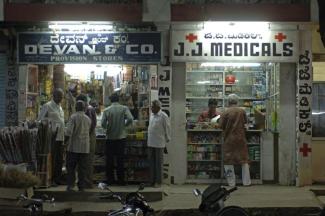Health care
A short history of Indian pharma

The public in the developed world first became aware of Indian pharma manufacturers when the company Cipla offered to provide South Africa with generic versions of patented HIV/AIDS drugs after the turn of the millennium. Indian law, at the time, did not grant patents for pharma products but only for production methods.
Accordingly, Indian companies had become experts in reverse engineering, finding alternative ways to produce medicines. This skill became internationally even more relevant when the World Trade Organisation summit in Doha decided in 2001 that governments could grant compulsory licences for the production of generic versions of patented drugs if they could not safeguard public health otherwise. Moreover, it authorised governments to order such generics from other countries.
In a recent essay, Heather L. Taylor (in Nölke, 2014: Multinational companies from emerging markets, see review essay in D+C/E+Z e-Paper 2016/01), has outlined the history of India’s pharma policies. After independence, multinational companies dominated the Indian pharma market. The prices were too high for the poverty-haunted country, so the government took several measures. One was the patent act of 1970. It protected procedures rather than products. Other steps were setting up state-owned pharma companies and investing in higher education and research institutes.
“By 1982, Indian firms had obtained approximately 50 % of the domestic market,” writes Taylor. Foreign companies increasingly lost interest in the Indian market, and local companies, including private-sector ones, benefited technologically from buying their Indian operations.
In the 1990s and even more so after the turn of the Millennium, Indian policy was no longer geared to import substitution, but increasingly emphasised world-market integration. Patent law now protects products. The government encouraged companies to become involved in international partnerships. Pharma manufacturers gained footholds in global value chains, first by providing active pharmaceuticals and later moving on to research-and-development services. As Taylor points out, governmental research institutes and universities stayed instrumental in disseminating knowledge within the pharma sector and training high-qualified staff.
In the scholar’s view, the government is still regulating the domestic market in ways that serve Indian companies, “especially with regard to drug pricing and the implementation of new patent laws related to life-threatening diseases that affect the majority of the population”.
She notes that Indian companies are increasingly involved in high-technology activities which tend to be more profitable then generics production. On the other hand, most medicines that the World Health Organization considers essential for health care are no longer protected by patents today, so the global market for generics is huge. (dem)
The global rise began in the domestic market: pharmacy in Bangalore. (Norbert Michalke Lineair)









